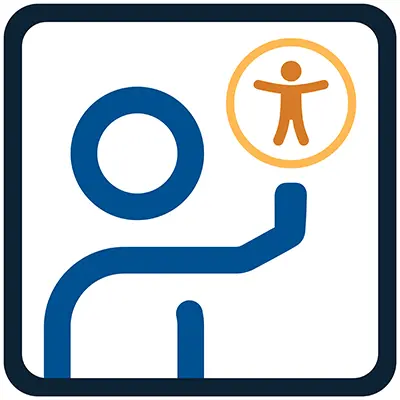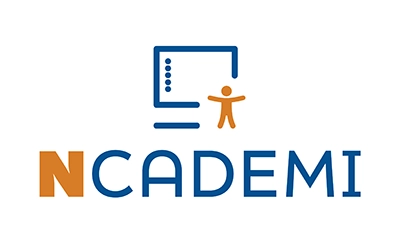Statement

State and local educational agencies (SEA and LEAs) establish a leadership structure for the provision and use of high-quality accessible digital educational materials to ensure students with disabilities can access the curriculum at the same time and with the same ease, privacy, and independence as students without disabilities.
Intent
Commitment from leadership is essential for initiating and sustaining a coordinated system for providing accessible digital educational materials. This commitment is demonstrated through public messaging, internal structures, and the alignment of roles and responsibilities across the agency. Leadership includes at least one individual with decision-making authority and a cross-disciplinary steering committee. This leadership structure is needed at both the state and local levels to ensure parallel efforts and consistent coordination.
Critical Components
To effectively address Quality Indicator DM1, the following components should be present:
DM1.1 Steering Committee
A cross-disciplinary digital accessibility steering committee at both the SEA and LEA levels, determined by the size and organizational structure of the agency. At a minimum, the following roles and responsibilities are included:
- Administration from both general and special education
- Technology (education, information, instruction, and assistive)
- Instructional materials adoption
- Curriculum and instruction
- Assessment
- General education
- Special education and related services
- Procurement
- Finance
- Students, staff, parents and caregivers, and community members with and without disabilities
DM1.1 Self-Assessment Scoring Matrix
| Not Started | Emerging | Operationalizing | Scaling & Sustainability |
|---|---|---|---|
| The need for a cross-disciplinary digital accessibility steering committee has not yet been considered. | The SEA and LEAs (the “agency”) are mapping roles, departments, and community participants, with attention to including representatives from each listed area and individuals with disabilities. Initial outreach is underway to invite members. | A steering committee has been established with participants from several key areas of the agency. The committee meets periodically and has begun identifying priorities, building shared understanding of digital accessibility, and coordinating across divisions. Some perspectives may still be underrepresented. | A fully functioning, cross-disciplinary steering committee has been established by the agency. All required roles are represented, including students, parents, and individuals with disabilities. The committee has clearly defined responsibilities, a regular meeting structure, and decision-making or advisory authority. It coordinates with agency leadership and across initiatives. Data, policies, and progress toward accessibility goals are regularly reviewed. |
The scoring matrix is part of the Quality Indicator Self-Assessment Tools.
DM1.2 Statement of Commitment
- A publicly available agency statement of commitment to digital accessibility. The SEA leads by modeling this statement, which can be adopted or adapted by LEAs.
- A shared definition of what accessibility means, explicit to the agency’s obligation to students, staff, and community members with disabilities.
- A shared vision and goal of a coordinated system for providing accessible digital educational materials.
- Incorporation of W3C/WAI recommendations for an accessibility statement, such as
- Measures the agency takes to support digital accessibility of its website and educational materials provided to students
- Process by which staff, students, families, community members, and others can provide feedback or inform the agency of accessibility barriers
- Technical specifications the agency uses to ensure accessibility
- Conformance status of websites and digital materials provided by the agency
- Methods by which the agency evaluates its websites and digital materials for accessibility
- Name and title of agency representative authorizing the statement
DM1.2 Self-Assessment Scoring Matrix
| Not Started | Emerging | Operationalizing | Scaling & Sustainability |
|---|---|---|---|
| The provision of a digital accessibility statement has not yet been considered. | The SEA is exploring models and guidance from W3C/WAI for creating a public accessibility statement. Staff are learning about legal obligations under the Americans with Disabilities Act (ADA) Title II. A draft statement is in development that includes a shared definition and vision. Key components (technical specs, feedback processes, conformance status, etc.) are being identified and discussed internally. | The SEA has published a public digital accessibility statement that includes a shared definition, the agency’s accessibility vision, and some key elements from W3C/WAI recommendations (e.g., feedback mechanism, conformance status). Awareness of the statement is increasing across the SEA, and LEAs are informed of the availability of the statement. | The SEA’s statement is publicly posted, frequently referenced, and kept up to date. It includes all key components aligned with W3C/WAI guidance. The statement is endorsed by senior leadership and integrated into communications, procurement, and digital governance processes. LEAs adopt or use the SEA statement to inform the development and ongoing updates of their own. |
DM1.3 Clear Role Expectations
Clear expectations regarding roles and responsibilities across the agency.
- Accessibility responsibilities embedded in position descriptions
- Use of accessibility practices included in performance evaluations
DM1.3 Self-Assessment Scoring Matrix
| Not Started | Emerging | Operationalizing | Scaling & Sustainability |
|---|---|---|---|
| Expectations for digital accessibility practices by role and responsibility have not yet been considered. | The SEA and LEAs (“the agency”) are reviewing existing position descriptions and evaluation criteria to identify where accessibility responsibilities should be included. Planning is underway to align expectations with relevant roles (e.g., instructional staff, procurement, IT, leadership). Leadership is exploring options for job-embedded accessibility responsibilities. | The agency has added accessibility-related responsibilities to some position descriptions and/or performance evaluation tools (e.g., for edtech leads, instructional designers, curriculum specialists). Staff in those roles are being supported through training and guidance. The agency is working toward consistent application of digital accessibility roles and responsibilities across departments and positions. | Accessibility expectations are systematically embedded in all relevant job descriptions and performance evaluations across the agency. Hiring, onboarding, and supervision processes reinforce these responsibilities. Staff understand how their role contributes to the agency’s accessibility goals. Expectations are reviewed periodically and updated as needed to reflect evolving practices and policies. |
